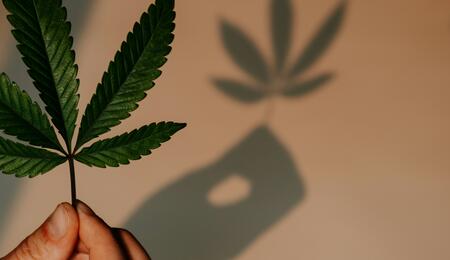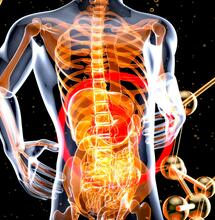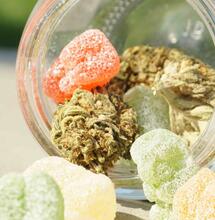Cannabis Leaves Are Full of Unique Compounds

Chemists at Stellenbosch University (SU) have uncovered proof of a distinct class of phenolic compounds, called flavoalkaloids, in Cannabis leaves.
Phenolic compounds—specifically flavonoids—are favourably viewed in the pharmaceutical world due to their antioxidant, anti-inflammatory, and anti-cancer effects.
In the study, three commercially grown Cannabis strains from South Africa were studied, resulting in 79 unique phenolic compounds being identified. Of these, 25 had never been documented in Cannabis previously, and 16 were provisionally identified as flavoalkaloids. Notably, these uncommon compounds were primarily located in the leaves of one specific strain. The outcomes of the study were printed in the Journal of Chromatography A.
What Are The Challenges in Examining Plant Phenolics?
Dr Magriet Muller, lead author of the study and analytical chemist in the LC-MS laboratory of the Central Analytical Facility (CAF) at Stellenbosch University, suggests that examining plant phenolics presents problems due to the low concentrations of the compounds and the radical structural diversity.
“Many plants have highly intricate mixtures of phenolic compounds. While flavonoids are prevalent in the plant kingdom, flavoalkaloids are quite rare in nature,” she remarks.
“We understand that Cannabis is incredibly complex—it contains more than 750 metabolites—but we did not expect to observe such significant variations in phenolic profiles among just three strains, nor did we predict discovering so many compounds for the first time within this species. The identification of flavoalkaloids in Cannabis was especially thrilling.”
Creating New Analytical Techniques
In her postgraduate research at SU’s Department of Chemistry and Polymer Science, Dr Muller devised cutting-edge analytical techniques that incorporate comprehensive two-dimensional liquid chromatography and high-resolution mass spectrometry, which allow for an exhaustive depiction of phenolic compounds.
“We were seeking a new application for the methods I created after successfully applying them to rooibos tea, grapes, and wine. I then chose to use the methods on Cannabis, recognising its complexity and the incomplete characterisation of Cannabis phenolics,” she explains.
According to Prof. André de Villiers, her academic mentor and the primary author of the study, he was impressed with the chromatographic outcomes achieved by Muller: “The remarkable effectiveness of two-dimensional liquid chromatography allowed us to separate the flavoalkaloids from the more common flavonoids, enabling us to identify these rare compounds for the first time in Cannabis.” He heads the analytical chemistry research group in SU’s Department of Chemistry and Polymer Science.
Prof. De Villiers underscores that there is still a significant amount to discover regarding Cannabis, as most studies in this area have concentrated on the pharmacological characteristics of mood-altering cannabinoids.
“Our analysis once again emphasises the medicinal potential of Cannabis plant material, which is often considered waste. Cannabis displays a rich and distinctive non-cannabinoid phenolic profile that could hold importance for biomedical research,” he concludes.
More From Soft Secrets:
The Unique Compounds of Cannabis
Study Shows Terpenoids More Effective Than THC or CBD at Relieving Pain








